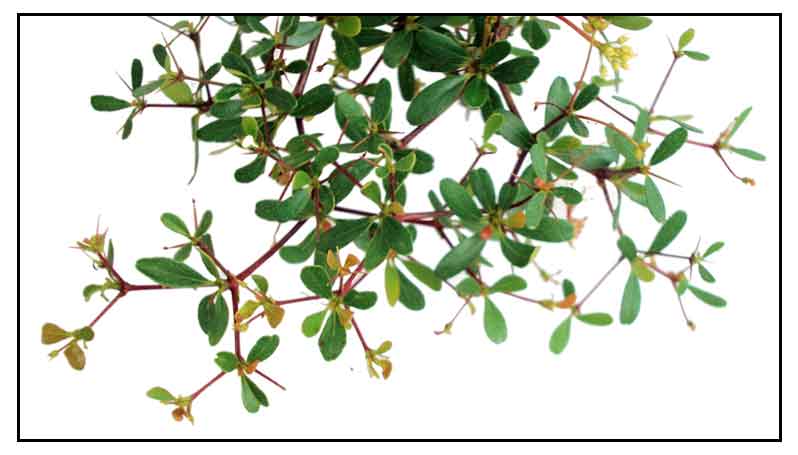 General
info General
info
Well known as an ornamental tree.
Called "Dwarf Geometry Tree" in Hawaii. It's big brother,
Bucida buceras is a source of timber in the Carribean. In tropical America,
it is known for its termite-resistant dry wood and used for house and
fence construction, scaffolding, railroad ties and pilings.
Botany
Bucida is a small, low and picturesque spreading
plant growing to a height of 4 feet. The branches are typically horizontal
giving it a layered appearance. Leaves are tiny, bright and light green,
about 1/4 inch long. New foliar growth is bronze-colored and ages to
light green. Stems are spiny. Flowers are yellow and insignificant,
followed by clusters of tiny brown to black fruit seed-capsules.
Distribution
- Cultivated.
-
A popular container and bonzai plant.
Constituents
- Reported to yield squalene.
Properties
- Bark yields a tanning agent.
- Styptic.
- Squalene considered as emollient, antioxidant and immunostimulant.
Parts utilized
Bark
Uses
Folkloric
- No
known medicinal use in the Philippines.
- Elsewhere, medicinally the bark of Bucida spinosa is mixed with the
bark of mangrove Rhizophora mangle and processed into a styptic agent—to stop bleeding when applied to wounds.
Others
• Immune System Stimulant: One of the many components of Sun's Soup,
a combination of 19 or more vegetables and herbs (soybean, shitake mushrooms,
garlic, scallions, ginseng, etc), marketed as complementary therapy
and dietary supplement for its alleged anticancer properties and stimulant
effect on the immune system.
• Cosmetics: Source of squalene which is used as emollinet, antioxidant, and immunostimulant. (3)
Studies
• No studies found.
Availability
Ornamental cultivation.
|



 General
info
General
info 

